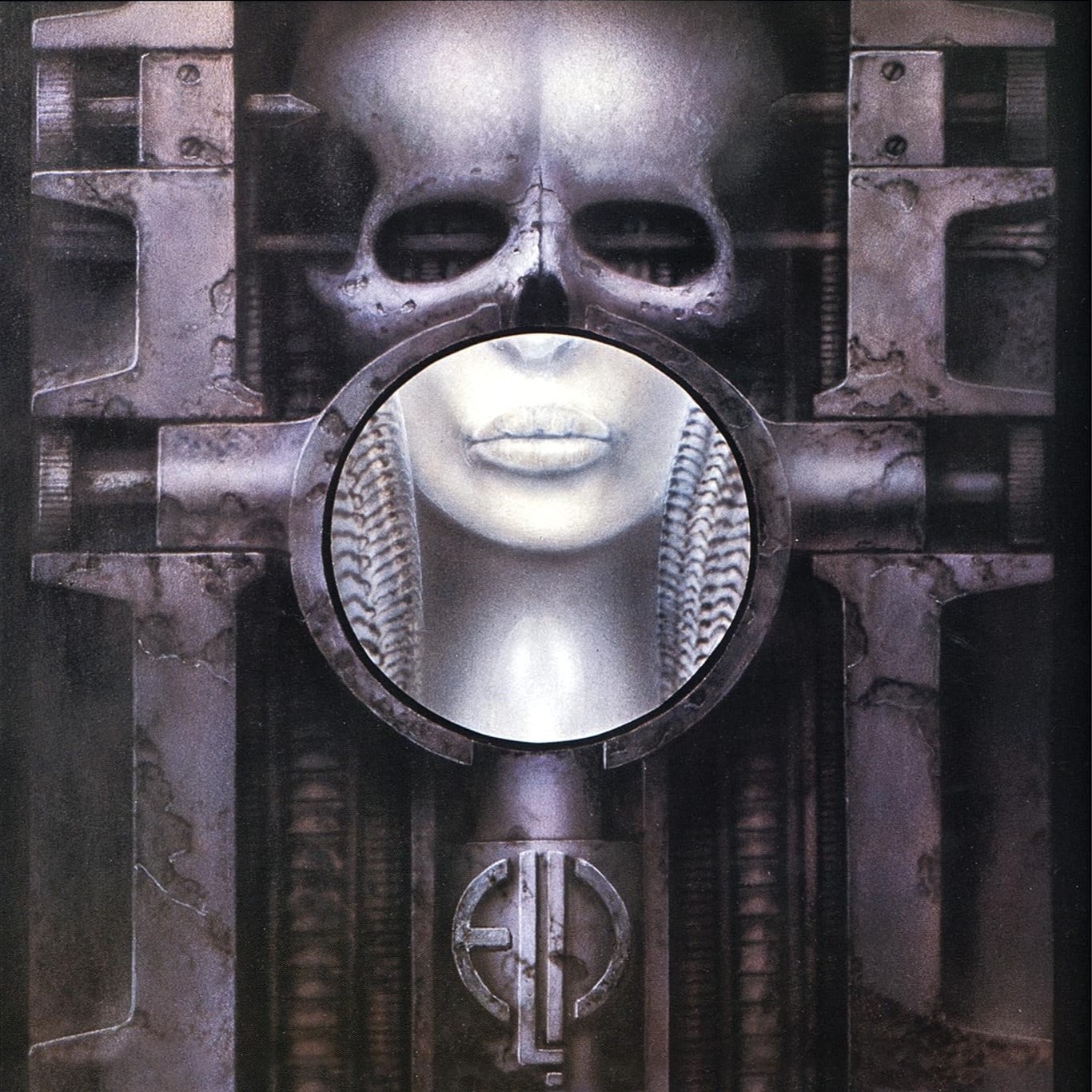 We are living in very strange times, indeed. In a Seinfeldian context: up is down, black is white, good is bad and day is night. Simplified messages are in circulation and you have to, more than ever, check the facts. The proverb "trust, but verify" is attributed to president Ronald Reagan (1911-2004), who used it on several occasions in the context of nuclear disarmament discussions with the Soviet Union. Not many people know that "trust, but verify" is a Russian proverb, which rhymes in Russian (romanized: doveryay, no proveryay). The origin of the proverb is not clear, but it must have been originated relatively recently. Hardline communist leaders Lenin and Stalin voiced similar ideas. "Trust is good, control is better" is attributed to Lenin, but there's no evidence that he ever said that. "Healthy distrust makes a good basis for cooperation" is attributed to Stalin, a proverb that is backed up by historical evidence. Neither of them practised trust-based leadership. On the contrary, paranoid leadership. Blind trust leads to disappointment. Distrust leads to unease. The golden middle way is the desirable middle between two extremes. Healthy skepticism is a good compromise between gullibility and cynicism. It's an irony of history, that president Ronald Reagan became so utterly amused by Soviet exercise of power and dictatorial language. But, hasn't the world always been directionless, equivocal, intermediate and timeless?
We are living in very strange times, indeed. In a Seinfeldian context: up is down, black is white, good is bad and day is night. Simplified messages are in circulation and you have to, more than ever, check the facts. The proverb "trust, but verify" is attributed to president Ronald Reagan (1911-2004), who used it on several occasions in the context of nuclear disarmament discussions with the Soviet Union. Not many people know that "trust, but verify" is a Russian proverb, which rhymes in Russian (romanized: doveryay, no proveryay). The origin of the proverb is not clear, but it must have been originated relatively recently. Hardline communist leaders Lenin and Stalin voiced similar ideas. "Trust is good, control is better" is attributed to Lenin, but there's no evidence that he ever said that. "Healthy distrust makes a good basis for cooperation" is attributed to Stalin, a proverb that is backed up by historical evidence. Neither of them practised trust-based leadership. On the contrary, paranoid leadership. Blind trust leads to disappointment. Distrust leads to unease. The golden middle way is the desirable middle between two extremes. Healthy skepticism is a good compromise between gullibility and cynicism. It's an irony of history, that president Ronald Reagan became so utterly amused by Soviet exercise of power and dictatorial language. But, hasn't the world always been directionless, equivocal, intermediate and timeless?
 After seven sorrows and eight afflictions maybe it's all going to happen, after all. I'm talking about Antic Clay's album "Broom of Fire", originally scheduled in 2017 as a 10 year anniversary of the release of "Hilarious Death Blues" (HDB). I'm chastened and sceptical. In the past couple of years there has been updates with hints of a release in the near future. I believe it, when I see it. In a recent update Antic Clay wrote: "Studio work continues here in the first quarter of 2025...With the current rate of progress I think a Spring 2025 release of the Broom of Fire album is likely". If we for the sake of the argument, assume a new album, what will it sound like? Antic Clay has reassured that "fans of HDB will not be disappointed". However, I don't sense any HDB-vibe in the three songs ("Center of the Night", "Brother Wolf Sister Moon" and "Elijah") that have been released. HDB was an album that blew your mind. "A slow dark ride across the scorched hide of America. Think Johnny Cash riding a skeletal mule to Hell. Not without moments of beauty and hope, however". Recreating something close to this album should be impossible. The key to happiness is low expectations. Be prepared to replace your expectations with acceptance and always leave room for disappointment.
After seven sorrows and eight afflictions maybe it's all going to happen, after all. I'm talking about Antic Clay's album "Broom of Fire", originally scheduled in 2017 as a 10 year anniversary of the release of "Hilarious Death Blues" (HDB). I'm chastened and sceptical. In the past couple of years there has been updates with hints of a release in the near future. I believe it, when I see it. In a recent update Antic Clay wrote: "Studio work continues here in the first quarter of 2025...With the current rate of progress I think a Spring 2025 release of the Broom of Fire album is likely". If we for the sake of the argument, assume a new album, what will it sound like? Antic Clay has reassured that "fans of HDB will not be disappointed". However, I don't sense any HDB-vibe in the three songs ("Center of the Night", "Brother Wolf Sister Moon" and "Elijah") that have been released. HDB was an album that blew your mind. "A slow dark ride across the scorched hide of America. Think Johnny Cash riding a skeletal mule to Hell. Not without moments of beauty and hope, however". Recreating something close to this album should be impossible. The key to happiness is low expectations. Be prepared to replace your expectations with acceptance and always leave room for disappointment.
 An album cover should have a close link to the music. In short, what you see is what you get. Sometimes the cover mismatch is overwhelming. Maybe the best example is "Brain Salad Surgery" by Emerson, Lake & Palmer from 1973. The album cover was created by Swiss artist H.R. Giger (1940-2014). Giger is known for his biomechanical art, a surrealistic style of art that combines elements of machines with organics. H.R. Giger was a sought-after artist and was part of the special effects team for the visual design of the 1979 sci-fi horror film Alien, and for the creating of the xenomorph itself. How ELP got in touch and persuaded H.R. Giger to create the album cover, and the controversies around it, are covered elsewhere. ELP was much loved and hated. Grandiose, pretentious and overweening are epithets that comes to mind. ELP captured the zeitgeist. Nothing was too big in the 1970s. On tour, about 65 people were involved. Nearly 40 tons of equipment were carried around in three TIR articulated trucks. On the truck roofs, their last names in enormous fonts, only visible from above. Keith Emerson used a total of ten (10) keyboards on stage. Greg Lake had an equally impressive bass rig. Carl Palmer’s hand-made, custom-built, revolving drum set-up complete with drum synthesisers alone weighed two and half tons. Despite the heavy load, ELP sounded quite lame. Personally, I don't dislike them. Actually, I have their first five albums. I was young and influencable (which doesn't explain why I later rebought them on cd). People who bought "Brain Salad Surgery" for the album cover must have been baffled when William Blake's delicate psalm Jerusalem faded in "And did those feet in ancient time / Walk upon England's mountain green? / And was the holy Lamb of God / On England's pleasant pastures seen?". This was a mismatch if there ever was one. One thing is clear. Biomechanical art and progressive rock doesn't go well together.
An album cover should have a close link to the music. In short, what you see is what you get. Sometimes the cover mismatch is overwhelming. Maybe the best example is "Brain Salad Surgery" by Emerson, Lake & Palmer from 1973. The album cover was created by Swiss artist H.R. Giger (1940-2014). Giger is known for his biomechanical art, a surrealistic style of art that combines elements of machines with organics. H.R. Giger was a sought-after artist and was part of the special effects team for the visual design of the 1979 sci-fi horror film Alien, and for the creating of the xenomorph itself. How ELP got in touch and persuaded H.R. Giger to create the album cover, and the controversies around it, are covered elsewhere. ELP was much loved and hated. Grandiose, pretentious and overweening are epithets that comes to mind. ELP captured the zeitgeist. Nothing was too big in the 1970s. On tour, about 65 people were involved. Nearly 40 tons of equipment were carried around in three TIR articulated trucks. On the truck roofs, their last names in enormous fonts, only visible from above. Keith Emerson used a total of ten (10) keyboards on stage. Greg Lake had an equally impressive bass rig. Carl Palmer’s hand-made, custom-built, revolving drum set-up complete with drum synthesisers alone weighed two and half tons. Despite the heavy load, ELP sounded quite lame. Personally, I don't dislike them. Actually, I have their first five albums. I was young and influencable (which doesn't explain why I later rebought them on cd). People who bought "Brain Salad Surgery" for the album cover must have been baffled when William Blake's delicate psalm Jerusalem faded in "And did those feet in ancient time / Walk upon England's mountain green? / And was the holy Lamb of God / On England's pleasant pastures seen?". This was a mismatch if there ever was one. One thing is clear. Biomechanical art and progressive rock doesn't go well together.
 You may be under the impression that vinyls and cds are on the rise. It's not your fault. Media present a sanitized image of a positive trend. The vinyl revival, also known as the vinyl resurgence, is a hard-to-kill myth. I saw a funny comic strip in my social media feed the other day: "The two things that really drew me to vinyl were the expense and the inconvenience". The cd hype is even harder to understand. There's no second wave or revival. If you compare the sales of physical formats with the sales of digital albums (downloads), then there's a significant rise since the latter are definitely on the decline. There are three kinds of lies: lies, damned lies, and statistics. I follow the statistics from the Swedish branch of the International Federation of the Phonographic Industry (IFPI). The statistics for Sweden in 2024 has been published recently. The revenues from cd sales amounted to 2 percent of total revenues (while vinyls amounted to 3 percent). Both formats are declining in absolute and relative terms. So much for the resurgence. CD sales peaked in 2000. Thereafter, cd sales began to decline. First gradually, then rapidly. I live in the most anxious and trend-sensitive country in the world. Everybody is streaming. Very few own a high-end stereo. My rescue is that the rest of world are more slow-moving. Albums are still coming out in the cd format, albeit to a lesser extent. The gothic country genre isn't spared, on the contrary. We were the early victims. We are converging towards zero.
You may be under the impression that vinyls and cds are on the rise. It's not your fault. Media present a sanitized image of a positive trend. The vinyl revival, also known as the vinyl resurgence, is a hard-to-kill myth. I saw a funny comic strip in my social media feed the other day: "The two things that really drew me to vinyl were the expense and the inconvenience". The cd hype is even harder to understand. There's no second wave or revival. If you compare the sales of physical formats with the sales of digital albums (downloads), then there's a significant rise since the latter are definitely on the decline. There are three kinds of lies: lies, damned lies, and statistics. I follow the statistics from the Swedish branch of the International Federation of the Phonographic Industry (IFPI). The statistics for Sweden in 2024 has been published recently. The revenues from cd sales amounted to 2 percent of total revenues (while vinyls amounted to 3 percent). Both formats are declining in absolute and relative terms. So much for the resurgence. CD sales peaked in 2000. Thereafter, cd sales began to decline. First gradually, then rapidly. I live in the most anxious and trend-sensitive country in the world. Everybody is streaming. Very few own a high-end stereo. My rescue is that the rest of world are more slow-moving. Albums are still coming out in the cd format, albeit to a lesser extent. The gothic country genre isn't spared, on the contrary. We were the early victims. We are converging towards zero.
 If you think this read is about Phil Spector's "wall of sound", stop reading now. There's nothing for you here. This blog post is about Marshall stacks a.k.a. Marshall walls. Marshall stacks driven by 100 watt heads was the aesthetic ideal during the 1970s. Another aesthetic ideal was a deafening sound that left an indelible imprint. The louder, the better. The size of the Marshall wall became an indicator of status, even when rendered obsolete by improved PA systems. It's a long time since you needed a 6*3 stack to be heard. However, the trade mark and imagery was so strong that later bands put up fake walls of Marshall stacks just for show. Fake, empty or dummy stacks isn't an admirable standard. We can call them "vanity stacks". Back to the "play it loud" ideal. Led Zeppelin were known for playing loud, circa 100 db(A). High volume may cause hearing damage. A volume of 115 dB(A) risks permanent damage after only 30 seconds. The Guinness Book of World Records recognised Deep Purple as the "globe's loudest band" in 1972 for a concert at the London Rainbow Theatre, during which the sound reached 117 dB. The Who later reached painful 126 dB. Playing loud comes at a price. Their guitarist and songwriter Pete Townshend suffered from hearing loss and tinnitus as a result of years of exposure to loud music. The Guinness Book of World Records discontinued the category for fear of encouraging hearing damage. Loudness can be measured by observation or by reputation. To complicate things further, it's hard to measure. Decibel measurement is dependent on distance from the source of the sound; if this is not given, the sound level reported is of limited use. Temporary ringing in the ears is a normal reaction to the kind of extreme noise that causes hearing loss. Back in the days, ringing in the ears was a sign of that you had been to a concert.
If you think this read is about Phil Spector's "wall of sound", stop reading now. There's nothing for you here. This blog post is about Marshall stacks a.k.a. Marshall walls. Marshall stacks driven by 100 watt heads was the aesthetic ideal during the 1970s. Another aesthetic ideal was a deafening sound that left an indelible imprint. The louder, the better. The size of the Marshall wall became an indicator of status, even when rendered obsolete by improved PA systems. It's a long time since you needed a 6*3 stack to be heard. However, the trade mark and imagery was so strong that later bands put up fake walls of Marshall stacks just for show. Fake, empty or dummy stacks isn't an admirable standard. We can call them "vanity stacks". Back to the "play it loud" ideal. Led Zeppelin were known for playing loud, circa 100 db(A). High volume may cause hearing damage. A volume of 115 dB(A) risks permanent damage after only 30 seconds. The Guinness Book of World Records recognised Deep Purple as the "globe's loudest band" in 1972 for a concert at the London Rainbow Theatre, during which the sound reached 117 dB. The Who later reached painful 126 dB. Playing loud comes at a price. Their guitarist and songwriter Pete Townshend suffered from hearing loss and tinnitus as a result of years of exposure to loud music. The Guinness Book of World Records discontinued the category for fear of encouraging hearing damage. Loudness can be measured by observation or by reputation. To complicate things further, it's hard to measure. Decibel measurement is dependent on distance from the source of the sound; if this is not given, the sound level reported is of limited use. Temporary ringing in the ears is a normal reaction to the kind of extreme noise that causes hearing loss. Back in the days, ringing in the ears was a sign of that you had been to a concert.
